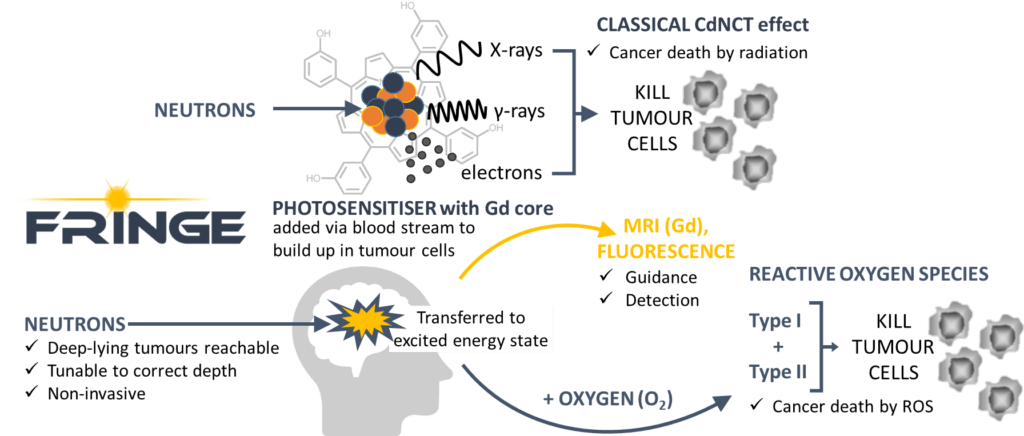Brain tumours such as glioblastoma multiforme (GBM) remain difficult, if not impossible, to cure due to their location deep inside the brain and their aggressive characteristics. Current standard treatment involves surgery, followed by radiotherapy and/or chemotherapy. However, these therapies show limited chances of success for long-term survival. Indeed, the relative survival rate for adults diagnosed with GBM is less than 30% within one year of diagnosis, and only 3% of patients live longer than five years after initial diagnosis. With over 28,000 new cases of malignant GBM diagnosed every year in the European Union (EU) and the United States (US) and in 240,000 patients globally each year.

As our new therapy is expected to eliminate most of the disadvantages and negative side effects of current treatment options, we envision the FRINGE technology to quickly become the new gold standard for brain tumour therapy, once in the clinic. The new therapy is expected to be advantageous for the following foreseen qualities:
- Non-invasive: Due to the deeper tissue penetration of the neutrons, the need for invasive surgery may be eliminated.
- Depth-tunable: By adjusting the energy and appropriate collimation of the incident neutron beam, the dose distribution at the target volume can be optimised, with minimal effect on the surrounding healthy tissues.
- High cancer specificity: In contrast to existing neutron-based therapies, the mechanism to kill tumour cells will not rely on primary mutagenic radiation. The surrounding healthy tissue would be minimally affected.
- Theranostic potential: Since Gd is a well-known contrast agent for magnetic resonance imaging (MRI), a PS containing Gd may facilitate treatment guidance and monitoring by MRI.
- Curative in single treatment, or limited repetitions: If performed optimally, the treatment is expected to be curative after a single application, as for singlet oxygen-based therapies. Nevertheless, the treatment could be repeated if necessary.
- Immunogenic potential: The FRINGE technology bears the potential of conferring immunogenic cell death (ICD) in the malignant tissues it is applied to. In ICD, when a malignant cell dies, it releases a series of signalling molecules which can train the patient’s immune system to build a systemic defence against current or future disease in different parts of the body. This has important implications as it could possibly eliminate occult metastases. Therefore, the FRINGE therapy could act like a cancer vaccine. The huge benefit of such an immunogenic potential can be further appreciated in light of the fact that metastatic disease is the cause of 90% of cancer deaths.
- Potential application to other cancer types: While inoperable brain tumours are the most ambitious targets of FRINGE, the therapy may be applicable to other deep lying tumours, like tumours in inner solid organs such as pelvic, pancreas, lung and bone disease but also to cancers that photomedical treatments are currently unable to target.